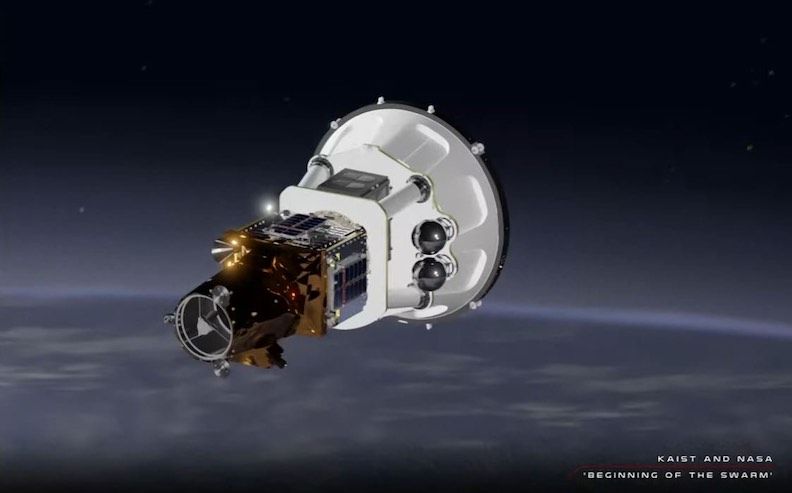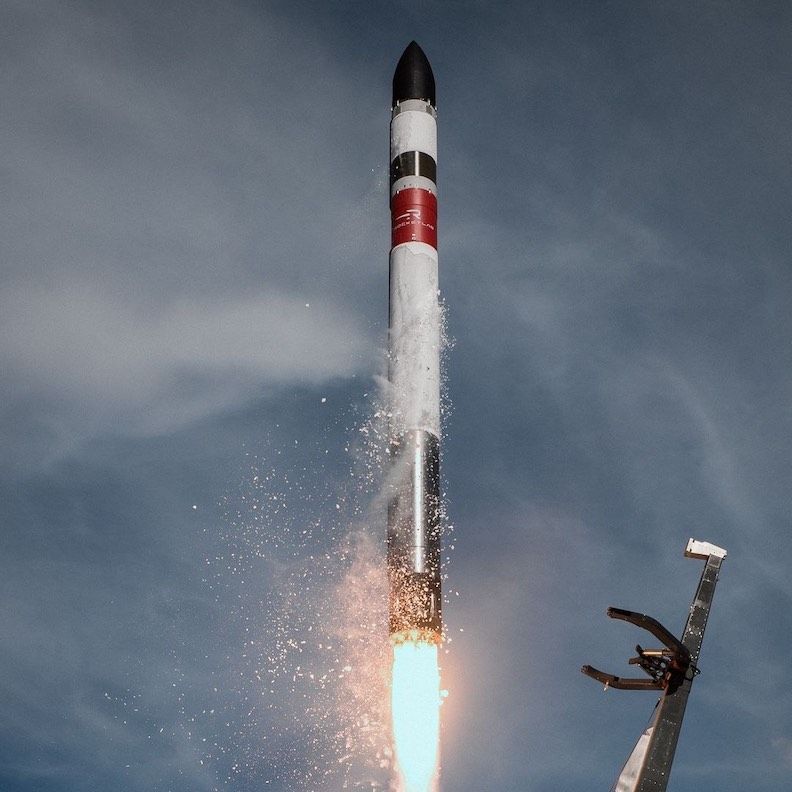Rocket Lab Launched its ‘Beginning of the Swarm’ Mission for KAIST and NASA Tonight
(Mahia, New Zealand) Rocket Lab USA Inc. (RKLB: NASDAQ) successfully launched its ‘Beginning of the Swarm’ Mission for the Korea Advanced Institute of Science and Technology (KAIST) and the National Aeronautics Space Administration (NASA) this evening, sending both a South Korean earth-observation satellite and NASA solar sailing technology toward orbit from New Zealand today at 6.33pm EST (2233 GMT; 10.33am on April 24 NZT (New Zealand time)).

Photo from this evening’s ‘Beginning of the Swarm’ mission courtesy of Rocket Lab on Twitter, SpaceX launched 23 of its Starlink internet satellites from Cape Canaveral, Florida.
The primary payload for the mission was NEONSAT-1, an Earth observation satellite for the Satellite Technology Research Center (SaTReC) at the Korea Advanced Institute of Science and Technology (KAIST). The satellite has a high-resolution optical camera designed to monitor for natural disasters along the Korean Peninsula by pairing its images with artificial intelligence, according to Rocket Lab’s mission overview.
Per Rocket Lab, NEONSAT-1 is the first satellite developed under the NEONSAT program by SaTReC and KAIST, Korea’s leading university in science and technology, which developed and operated Korea’s very first satellite KITSAT-1 more than 30 years ago. Additional NEONSAT satellites are planned to be launched in 2026 and 2027 to build out the NEONSAT constellation.
The secondary payload aboard Rocket Lab’s Electron vehicle was NASA’s Advanced Composite Solar Sail System, or ACS3, a technology demonstration of new materials and deployable structures for solar sail propulsion systems that use sunlight to propel the spacecraft, according to Rocket Lab.
“Much like a sailboat is powered by wind pushing against a sail, solar sails employ the pressure of sunlight for propulsion, eliminating the need for conventional rocket propellant,” Rocket Lab wrote in a mission description. “The mission plans to test the deployment of new composite booms that will unfurl the solar sail to measure approximately 30 feet per side, or about the size of a small apartment in total.”
Per Space.com, solar sails harness the subtle push of sunlight, using it to propel probes through space much as seagoing ships capture the wind here on Earth; because solar sailing is efficient and requires no fuel, many exploration advocates have high hopes for this relatively novel propulsion strategy.
A few solar sailing missions have already flown, including Japan’s Ikaros spacecraft and the Planetary Society’s LightSail 2, and ACS3 aims to develop the technology further, per Space.com.

Photo of this evening's 'Beginning of the Swam' launch courtesy of Rocket Lab on Instagram, @rocketlabusa.
The two satellites aboard Rocket Lab’s mission headed to different orbits: The Electron deployed NEONSAT-1 323 miles (520 kilometers) above Earth about 50 minutes after liftoff, then deposited ACS3 at an altitude of 620 miles (1,000 km) 55 minutes later as planned, according to Space.com.
"Beginning of the Swarm" was Rocket Lab's fifth orbital launch of 2024 and its 47th overall; all but four of the company's liftoffs to date have occurred from its New Zealand site, on the North Island's Mahia Peninsula; the others have lifted off from NASA's Wallops Flight Facility in Virginia, per Space.com.
According to Space.com, Rocket Lab is working to make the 59-foot-tall (18-meter-tall) Electron's first stage reusable. The company has recovered boosters from the sea on multiple prior missions and is planning to refly one of them on an upcoming launch; however, there were no recovery activities on "Beginning of the Swarm."
